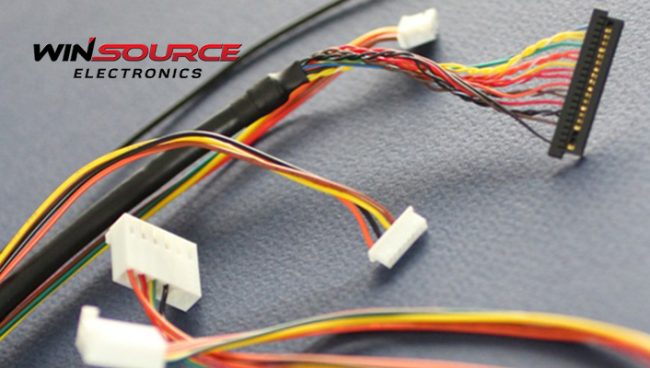
Temperature sensors have become an integral part of our daily lives, measuring the temperature in our homes and monitoring industrial processes. With the rise of Internet of Things (IoT) devices, the demand for accurate and versatile temperature sensors has increased significantly.
One such sensor that stands out in terms of performance and flexibility is the NOVOSENSE NS18B20-QTOS. This temperature sensor offers high precision, ease of use, and adaptability, making it the perfect choice for various applications.
Let’s get into the features and capabilities of the NOVOSENSE NS18B20-QTOS temperature sensor and explore its potential uses in various projects.
NS18B20-QTOS Overview
1-Wire Interface and Unique Serial Code
One of the standout features of the NS18B20-QTOS is its unique 1-Wire interface, requiring only one port pin for communication. This simplifies the integration process, making it an attractive choice for projects where space and resources are limited. Additionally, each NS18B20-QTOS device is equipped with a unique 64-bit serial code stored in an onboard ROM. This not only ensures the integrity of data but also facilitates the use of multiple devices on the same bus, controlled by a single processor.
Temperature Range and Accuracy
The NS18B20-QTOS offers an impressive temperature range from -55°C to +125°C (-67°F to +257°F), catering to a broad spectrum of applications, from extreme environments to standard operating conditions. The device maintains high accuracy throughout the temperature range, with a remarkable ±0.5°C accuracy from -10°C to +85°C and ±1°C accuracy from -55°C to -125°C. This precision makes it suitable for critical temperature monitoring and control applications.
Programmable Thermometer Resolution
One of the NS18B20-QTOS’s distinguishing features is its programmable thermometer resolution. Users can adjust the resolution from 9 to 12 bits, allowing for flexibility based on the application’s specific requirements. This adaptability is crucial in scenarios where fine temperature control is necessary.
QTOS Technology
The inclusion of QTOS technology in the NS18B20-QTOS is a noteworthy advancement. QTOS, which stands for Quick Temperature Oversampling, is a proprietary technology that enhances the temperature measurement speed and accuracy. By leveraging QTOS, users can set the digital conversion accuracy and temperature measurement speed through the configuration register, tailoring the sensor’s performance to their precise needs.
Non-Volatile Storage
The NS18B20-QTOS features a built-in 5-byte non-volatile storage unit, providing users with a dedicated space for critical information. Out of the 5 bytes, 3 are allocated for high and low-temperature alarms and configuration accuracy, while the remaining 2 bytes can be utilized to store user-defined information. The non-volatile storage write cycle is a swift 10ms, ensuring that data is stored reliably and efficiently.
Power Supply Options
The NS18B20-QTOS supports two distinct working modes: parasitic power supply and external power supply. In the parasitic power supply mode, the sensor can draw power through the data line, eliminating the need for an external power source. This feature is particularly advantageous in scenarios where power resources are constrained.
Ease of Use: Connecting and Programming the NOVOSENSE NS18B20-QTOS
The NOVOSENSE NS18B20-QTOS might be a mouthful of a name, but don’t let that intimidate you. Connecting and programming this versatile temperature sensor is surprisingly straightforward, making it a fantastic choice for beginners and seasoned tinkerers alike.
Connecting the NS18B20-QTOS
There are two main ways to connect the NS18B20-QTOS:
- Single-wire mode: This mode uses just one data pin and is perfect for simple projects with limited space. Connect the sensor’s DQ (data) pin to your microcontroller’s data pin (e.g, Arduino D4) and the GND and VCC pins to the appropriate power rails.
- Three-wire mode: This mode offers faster read speeds and improved noise immunity. Connect the DQ, GND, and VCC pins as described above, then connect the CLK (clock) pin to your microcontroller’s clock pin (e.g., Arduino D5).
Programming the NS18B20-QTOS
The good news is you don’t have to reinvent the wheel! Libraries like the Dallas Temperature Library for Arduino make working with the NS18B20-QTOS a breeze. These libraries handle the communication protocols and calculations, leaving you to focus on the fun stuff – like using the temperature data in your project.
Applications
The NS18B20-QTOS finds its application in a diverse range of scenarios, including:
Process Monitoring and Control System
The NS18B20-QTOS’s high precision and wide temperature range make it ideal for process monitoring and control systems where temperature accuracy is paramount.
Industrial Internet of Things (IIoT)
The NS18B20-QTOS shines in the realm of IIoT, where reliability and precision are crucial. Its unique interface and versatile features make it valuable in industrial sensor networks.
White Goods
White goods like refrigerators and air conditioners benefit from the NS18B20-QTOS’s accuracy and programmable resolution, ensuring optimal performance and efficiency.
Temperature Monitoring Systems
Whether in laboratories or environmental monitoring, the NS18B20-QTOS’s accuracy and versatility make it a preferred choice for temperature monitoring applications.
In conclusion, the NOVOSENSE NS18B20-QTOS is a versatile and accurate temperature sensor with a wide range of features for your next project. It is an ideal choice for a home automation system, industrial application, or any other project that requires temperature sensing.
If you need to buy temperature sensors for your project, WIN SOURCE offers a wide range. With its high-quality electronic components and excellent customer service, WIN SOURCE offers a reliable and efficient experience.
© 2025 Win Source Electronics. All rights reserved. This content is protected by copyright and may not be reproduced, distributed, transmitted, cached or otherwise used, except with the prior written permission of Win Source Electronics.

COMMENTS